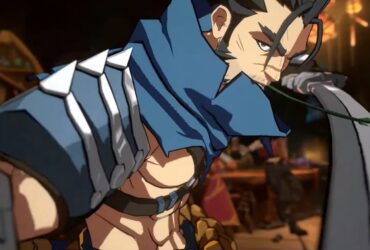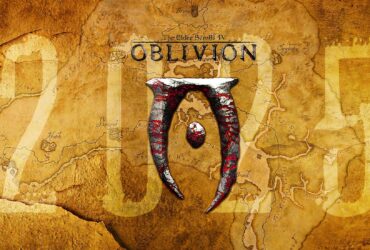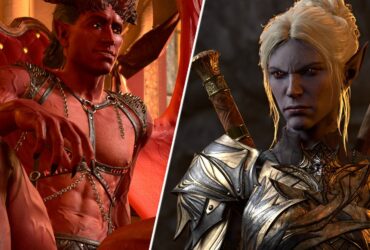Soulslike thrills combine with sky-high production values to make Path of Exile 2 a hugely impressive package, even in early access.
Path of Exile 2 is hard – there’s no getting around this simple truth. It’s a truth you need to understand before you play the game in order to get the most out of it, and to accept it, if you like. Like the Souls series, this is a game about relishing the challenge and overcoming seemingly impossible odds to move forwards. Through perseverance and trial and error, you will succeed, and you will feel all the more incredible for it.
Path of Exile 2 early access review
- Developer: Grinding Gear Games
- Publisher: Grinding Gear Games
- Platform: Played on PC
- Availability: Out now in early access on PC (Steam, Epic Games Store), PlayStation 5, and Xbox Series S/X. Note: the game will eventually be free-to-play but there’s a ~£24 fee for early access, which also buys you some shop currency to spend in the game
I say this upfront because it’s clear that some players out there are a bit confused by what Path of Exile 2 is about. On PC, barely an hour goes by in the game’s general chat without somebody upending their proverbial table and declaring they’ve had enough. “That’s it, I quit! This game is s***!” they say, and then storm away from their keyboard, probably to return quietly an hour later. Chat’s favourite response? “Skill issue.” (I think you can tell a lot about a community and a game from its general chat.)
Their apparent surprise at the difficulty surprises me, not least because Path of Exile 1 is already a known quantity on this front, but you also have to pay to get Path of Exile 2’s early access period, so they’ve actively had to buy their way in – it’s not free-to-play yet like it eventually will be when it leaves early access. These players have deliberately made a choice. So where does the confusion come from? Diablo 4, it seems. People are flooding in from Blizzard’s ARPG expecting an experience like it – and it’s a path I myself have followed, too.
They’re not wrong to do it: Path of Exile 2 and Diablo 4 look very similar and generally play the same way. They’re both action role-playing games played from a similar isometric perspective, and they involve smashing your way through hordes of enemies, looting them, levelling up, and doing it all again. Glance quickly at them and they could easily be the same game. But, importantly, their hearts are different.
In recent Diablos, Blizzard has spent time and effort thinking about how to open the game up to newcomers, which is why Diablo 4 has an easy, standard difficulty and then gives you the option of turning it up (and up and up) if you want to. In Path of Exile 2, you don’t get that choice – there’s one strict difficulty and it cannot be budged – so if you come up against a boss you can’t kill or a challenge you can’t overcome, you can’t modify its difficulty down. Somehow, you’ll have to find a way through, and usually this involves dying. I’ve died upwards of 70 times since playing on the public launch servers, something I embarrassedly told chat recently, to which the chat replied “oh that’s nothing”, and death counts of 250 upwards rolled in. Path of Exile maker Grinding Gear Games sensed an opportunity in Blizzard’s change of heart and leant into it.
The other side of that difficulty is tremendous reward – heart-thumping adrenaline as the boss you’ve tussled with for seven or eight attempts finally approaches their demise. It’s the heart-in-the-mouth excitement as I thump my monk’s killing blow ability, hoping it’ll land before I end up face first on the floor. Hard-earned progress and satisfaction: that’s what you get. And with only one difficulty level, it means everyone in the game experiences everything in roughly the same way (the variable being you and your character), so when someone flips their proverbial table in chat, everyone else there knows what they’re talking about. As daunting as the difficulty sounds, then, think of it instead as the sun in a solar system, around which everything revolves. It’s what sparks life in every area of the game, and it’s an incredibly powerful motivating force.


To backtrack a tiny bit: Path of Exile 2 is the sequel to Path of Exile 1, the free-to-play ARPG that grew from very humble beginnings and became many people’s pick of the genre for its unparalleled complexity and ability to keep people busy for hundreds and hundreds of hours. That’s all still very much present and correct here – you need only take one look at the 1500 nodes on the Passives skill tree to see what I mean (they do not fit on one screen) – and there’s even more complexity now in support gems that enhance your ability gems, so you can further modify them. There are character classes in the game, but it also gives you near complete freedom to bend them any which way you will, towards spellcasting or melee, and your knowledge of how to build them is constantly expanding.
The celebrated complexity remains then, but with Path of Exile 2 co-existing alongside Path of Exile 1 – a nice idea, especially as they share a cosmetics shop – there’s also a freedom for the sequel to be something different and not be beholden to doing the same thing again. To that degree, it’s a slightly slower experience. There’s a more tentative feel to exploring the world rather than romping around recklessly through it. Here, you edge forwards so as not to aggravate too many hidden enemies nearby. The game is fond of hiding enemies in relatively plain sight: bones that reform into skeletons; rocks that become crab things; statues that come to life; golems that erupt from the ground or walls. Should they surround you, and they will, then their physical presence means you might find it impossible to get away.



It actually reminds me a lot of the original Diablo games, which were quick to punish overconfidence. Come to think of it, there’s a lot about those earlier Diablo games in Path of Exile 2’s DNA. You have a tiny inventory you have to hand-organise and empty often, and it’s a screen by screen experience rather than a seamless open world. And even though locations are large – large forests, large canyons, large caves – there’s always a sense of claustrophobia to them, of tight confines, of 640×480 resolution hemmed-in-ness, if that makes sense. There are lots of bottlenecks, lots of potential hazards by design.
The mood of the game reminds me of old Diablos, too, not only because it’s morose and dark – it has the best opening: all of the character classes aligned on a hangman’s scaffold, ready to swing – but also in how oppressive the difficulty makes it feel. Diablo 1 feels scarier than Diablo 4 because you’re scared of dying, I think, and it’s the same in Path of Exile 2. Incidentally, there’s no punishment for dying in the game, and checkpoints are placed liberally around maps, and immediately before boss encounters. The biggest inconvenience is having to wade through some trash or in-between enemies again.
It all makes for a nervy experience – a leant-forwards one rather than a sat back one. Not always, I should add – there are moments where you will find the glorious golden sweet-spot in your build and begin your romp through environments and even through bosses – a feeling you will relish and revel in. There are also moments where you’ll farm or grind, returning to areas with a slightly lower level of monster so you can more easily rob them of their rewards. Usually, though, certainly when you’re pushing forwards into uncharted territory, you’ll be on the edge of your seat.



What makes all of this sing, what prevents this from ever feeling unduly unfair or frustrating, is the skill with which it’s been built. You can really feel the decade of experience Grinding Gear Games has built up making Path of Exile 1, not to mention the resources it acquired from the success it’s enjoyed. Superficially, Path of Exile 2 is gorgeous – intricately detailed and elegant, and wonderfully dour and muted to look at, in a kind of Rembrandty-brown way. Think of a ‘Starks in the North’ kind of colour palette from A Game of Thrones (against which the faerie wings bought from the cosmetics shop somewhat clash, but I appreciate they have to be stand-out enough for people to want to get. I bought a rock pet that sprouts spindly legs and arms on a whim, and that rushes around ridiculously behind me).
Some of the game’s spectacles made me “wow” out loud, too. Typically, it’s the bosses, the game’s centrepieces. A towering Colossus looming over me like a titan come to life made me gawp, as did the gruesome sight of a hulking executioner lopping off someone’s head in front of me – that then rolled down onto a huge pile of bloody heads – before the fight began. There’s such drama to these encounters, witnessed in little speeches they give you before they leap into battle, or in the ways they taunt you as you fight. Rarely are they ever just oversized damage sponges you’ll forget the moment you move on; they are enemies with character and encounters with nuance, and your repeat attempts will sear the memory of them into your mind. No one will forget the Count at the end of Act 1 in a hurry.


But it’s not all about boss fights: there’s plenty to be said for the menagerie you’ll meet in between, and not only the twisted sense of imagination that’s brought them to life, but also the consideration with which enemy types have been put together. I’ve got a love-hate relationship with a skeletal sorcerer who reanimates colossal skeletons, which literally throw themselves at your feet, doing huge damage if you don’t roll out of the way. Leave the skeletal sorcerer unchecked and they’ll reanimate these bones indefinitely, but getting to them in all the chaos can be hard, which presents you with a very real problem. The game is full of thinking like this – the accrued knowledge of how people play these games and how best to challenge them.
The zones themselves are visually impressive, too. Grim, cloying forests and pestilence-ridden, flaming farmlands give way to an expansive desert with craggy canyons and hidden caverns in Act 2, and a spectacular town-like caravan pulled by a legion of emaciated slaves, which serves as your hub. It’s a large, large game, even in early access. There’s an Act 3 I haven’t quite been able to get to yet, and once the game hits 1.0, there will be Acts 4-6 to wade through as well. Until then, you’ll have the option to rerun Acts 1-3 on Cruel difficulty, before the expansive endgame begins in a whole new zone of its own. The community reckoning is that it takes around 25 hours to clear Acts 1-3, a further 25 to re-run it, if not more, and then another 50 and upwards to get into the endgame – but given the general difficulty of the campaign, this can vary wildly. In other words, there’s a substantial amount here, and it’s an impressive package.

A more pertinent question might be should you jump in now? It’s already polished and, barring a few server issues during the game’s public early access launch at the end of last week, a solid and stable experience, and there are no glaring issues with how the game works that should give you pause. But there are, naturally, some kinks and tuning issues, and there’s a general lack of final-polish and explanation (the lack of which can be quite endearing) that I’m sure will be added in the six months at least that Grinding Gear Games intends to keep it in early access (with active development obviously continuing for years thereafter, too, just like it’s done for its predecessor).
One particular annoyance for me was controller support, which is present and generally works, but becomes irritating when you need to select specific things during the heat of battle, because of automatic targeting. You can turn some of this off and play around with the settings, but there’s no escaping that it feels suboptimal compared to WASD mouse and keyboard controls. I haven’t tried this on console, but I assume that it’s the same there.
Path of Exile 2 accessibility options
Screen shake on/off, camera rotation effects on/off, highlightable objects of interest, high contrast mouse cursors, scalable cursor size, scalable chat font size, remappable controls (for mouse and keyboard, and controller).
The safe bet, then, would be to wait for it all to be ironed out, and until you can try it for free as a free-to-play game. But there is something to be said for not missing out on the rush to play something for the first time, and the collective sense of community excitement that comes from that, as people figure things out and work out which bosses will become infamous and which builds will be considered overpowered. This is an online experience and I can feel it nudging me towards the other players to trade for loot – it’s stingy with drop rates – and to occasionally ask for help. But it’s nice to have other people around – it’s nice not to do this in isolation. Share your pain here and the community winces with you (or says “skill issue”).
Path of Exile 2 is hard, then, and it’s not Diablo 4 – and you need to know that before you dive in. But it is a bit like Diablo in the ways that matter. Much like Baldur’s Gate 3 did with BioWare’s old RPG series, Path of Exile 2 has found a way to reincarnate Blizzard’s old ARPG series for a new audience – and made something wholly its own in the process. Path of Exile 2 is a juggernaut, and worthy of all the plaudits it will no doubt get in the months and years to come.
A copy of Path of Exile 2 was provided for review by developer Grinding Gear Games.
function appendFacebookPixels() { if (window.facebookPixelsDone) return; !function(f,b,e,v,n,t,s) {if(f.fbq)return;n=f.fbq=function(){n.callMethod? n.callMethod.apply(n,arguments):n.queue.push(arguments)}; if(!f._fbq)f._fbq=n;n.push=n;n.loaded=!0;n.version='2.0'; n.queue=[];t=b.createElement(e);t.async=!0; t.src=v;s=b.getElementsByTagName(e)[0]; s.parentNode.insertBefore(t,s)}(window, document,'script', 'https://connect.facebook.net/en_US/fbevents.js');
fbq('init', '560747571485047');
fbq('track', 'PageView'); window.facebookPixelsDone = true;
window.dispatchEvent(new Event('BrockmanFacebookPixelsEnabled')); }
window.addEventListener('BrockmanTargetingCookiesAllowed', appendFacebookPixels);
Source link












Leave a Reply